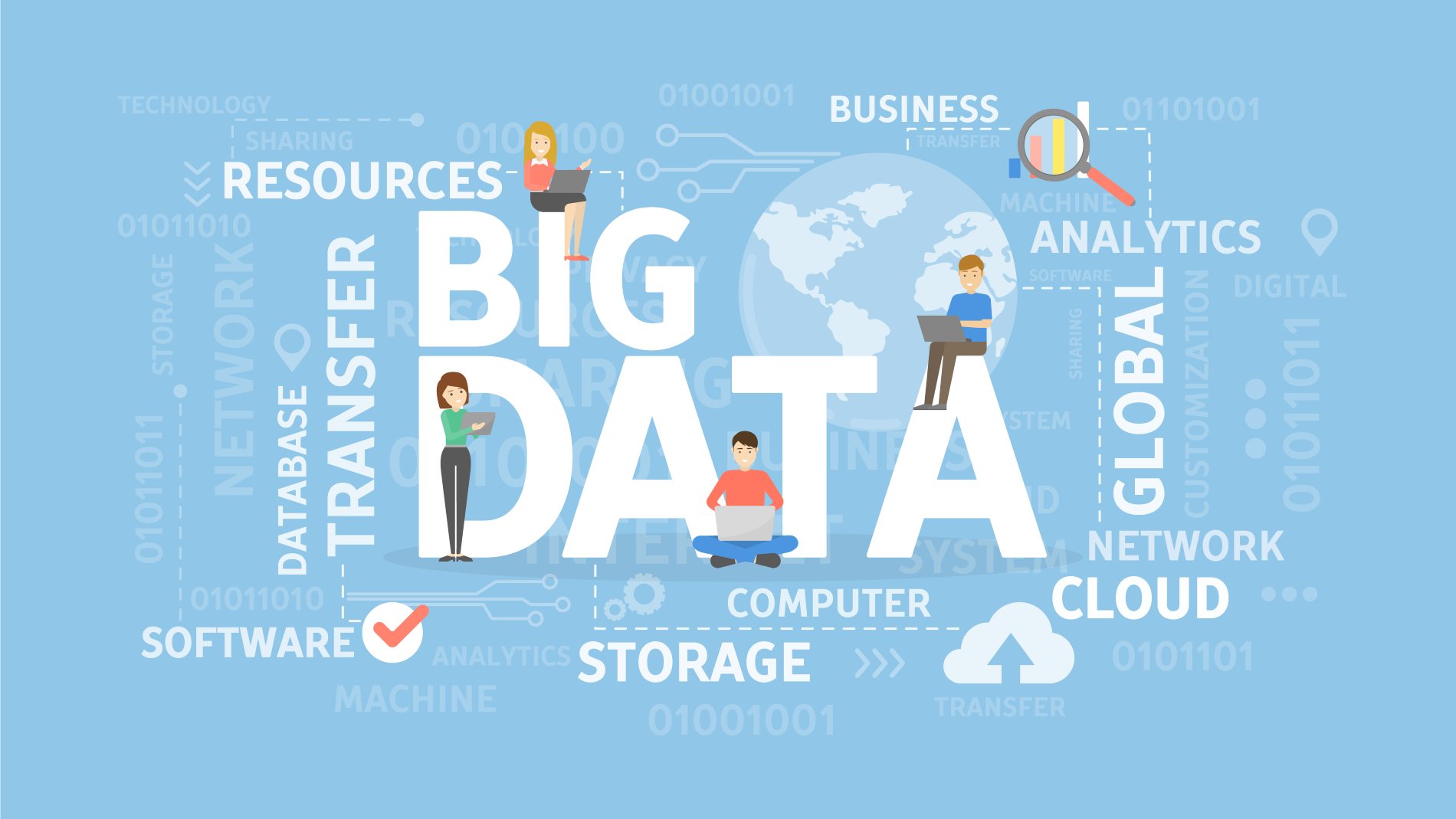Big Data vs Fast Data: Optimize Your AI Strategy
- Big Data: Involves analyzing large volumes of data over time for deep insights, such as training AI models or forecasting trends.
- Fast Data: Focuses on real-time data processing for immediate decisions, like fraud detection or personalization.
- Trade-off: Optimizing for one may limit the other due to different architectures and resource needs.
- AI Strategy: Choosing the right data approach depends on whether your goal is depth (big data) or speed (fast data).
- Combination: Many organizations use both, leveraging big data for model training and fast data for real-time applications.
In today’s world, data is the backbone of artificial intelligence (AI) and automation. But not all data is the same. Two key concepts, big data and fast data, play distinct roles in how organizations leverage data for AI. Big data focuses on analyzing massive datasets to uncover deep insights over time, while fast data is about processing data in real-time to make instant decisions. Understanding the differences between these two approaches is essential for building an effective AI strategy. This article explores the definitions, architectures, use cases, and maturity models of big data and fast data, offering practical guidance on how to optimize your AI strategy.
On This Page
Table of Contents
Introduction
Data is often compared to oil—a resource that powers modern technology. However, just as crude oil needs refining to become useful, data must be processed correctly to drive AI and automation. The challenge lies in choosing the right processing method. Big data and fast data represent two different ways to handle data, each with its own strengths and trade-offs. Big data is about depth, helping organizations uncover long-term trends and build robust AI models. Fast data is about speed, enabling real-time decision-making in dynamic environments. By understanding these concepts, you can align your data strategy with your AI goals, ensuring maximum value from your data investments.
Understanding Big Data
Big data refers to the massive volumes of structured and unstructured data that organizations collect and analyze to extract insights over time. It’s characterized by the three V’s: volume (large amounts of data), variety (diverse data types), and velocity (high speed of data generation). In big data, processing is typically done in batches, focusing on historical analysis rather than immediate action.
Key Characteristics of Big Data
- Volume: Datasets often range from terabytes to petabytes, requiring significant storage capacity.
- Variety: Includes structured data (e.g., databases), semi-structured data (e.g., JSON), and unstructured data (e.g., text, images).
- Velocity: Data is generated quickly, but processing is not real-time, often involving batch jobs.
Use Cases for Big Data
Big data shines in scenarios where deep insights are needed over long periods:
- AI Model Training: Using historical data to train machine learning models for tasks like predictive analytics.
- Historical Analysis: Analyzing past trends to forecast future outcomes, such as sales or market trends.
- Compliance and Governance: Managing large data archives for regulatory requirements, such as financial records or customer data.
Key Technologies for Big Data
To handle big data, organizations rely on specialized technologies:
- Data Warehouses: Centralized repositories for storing and managing large datasets, such as Amazon Redshift or Google BigQuery.
- Processing Technologies: Tools like Apache Spark for distributed data processing.
- Business Intelligence (BI) Platforms: For creating dashboards and reports, such as Tableau or Power BI.
- AI Platforms: For machine learning and deep learning, such as TensorFlow or PyTorch.
Maturity Model for Big Data
Organizations progress through different stages when adopting big data:
| Stage | Description | Example |
|---|---|---|
| Crawl | Siloed data repositories with basic AI and dashboards. Each department has its own data warehouse, generating value independently. | A retail company with separate databases for sales, inventory, and customers. |
| Walk | Unified data systems with integrated processing technologies. Data is consolidated into a single repository, such as a data lake or data mesh. | The same company moves to a unified data lake, enabling cross-departmental analysis. |
| Run | Advanced architectures with AI-driven automation. Includes auto-scaling storage, AI-powered governance, and automated maintenance. | The company implements AI tools to automate data scaling and compliance checks. |
Real-World Example
A retail company might start with separate data warehouses for sales, inventory, and customer data (crawl). Over time, they consolidate these into a unified data lake (walk) and later implement AI tools to automate data governance and scaling (run). This progression allows them to generate deeper insights, such as predicting seasonal demand based on years of sales data.
Understanding Fast Data
Fast data is about processing data as it arrives to make instantaneous decisions. While it can involve large volumes, its value lies in its timeliness rather than its size. Fast data is critical in dynamic environments where delays could mean missed opportunities or losses.
Key Characteristics of Fast Data
- Velocity: Real-time or near-real-time data processing.
- Veracity: Ensuring data quality and accuracy in real-time.
- Variety: Often includes streaming data from sources like sensors, social media, or transaction logs.
Use Cases for Fast Data
Fast data is ideal for scenarios requiring immediate action:
- Fraud Detection: Identifying fraudulent transactions in real-time to prevent losses.
- Personalization: Tailoring recommendations or offers based on immediate user behavior.
- IoT Automation: Controlling devices based on real-time sensor data, such as smart thermostats.
Key Technologies for Fast Data
Fast data requires technologies optimized for speed:
- Data Integration: Streaming platforms like Apache Kafka for handling real-time data feeds.
- Event-Driven Architectures: Systems that react to events as they occur.
- Function-as-a-Service (FaaS): For lightweight, low-latency processing, such as AWS Lambda.
- Ephemeral Storage: Temporary storage for recent data, often used in caching.
Maturity Model for Fast Data
Organizations also progress through stages when adopting fast data:
| Stage | Description | Example |
|---|---|---|
| Crawl | Basic log analysis or real-time alerts. Sends notifications when specific events occur. | A payment processor sends alerts for suspicious transactions. |
| Walk | AI-enhanced categorization and summarization. Uses AI to label events as “high-risk” or “low-risk.” | The processor uses AI to categorize transactions as fraudulent or legitimate. |
| Run | Fully autonomous systems that take actions based on fast data insights. Automates responses to events. | The processor automatically blocks fraudulent transactions in real-time. |
Real-World Example
A payment processing company might start by sending alerts for suspicious transactions (crawl), then use AI to categorize transactions as fraudulent or legitimate in real-time (walk), and eventually automate fraud prevention by blocking transactions instantly (run).
Big Data vs Fast Data: The Trade-off
While both big data and fast data are valuable, they represent a trade-off. Optimizing for one can limit your ability to leverage the other due to differences in architecture and resource requirements.
Why the Trade-off Matters
- Resource Allocation: Investing in big data technologies (e.g., large data warehouses) may leave fewer resources for fast data systems.
- System Design: Big data systems prioritize scalability and batch processing, while fast data systems focus on low latency and real-time analytics.
- Use Case Fit: Choosing the wrong approach can lead to inefficiencies or failure to meet business needs.
For example, a big data system designed to analyze years of sales data might struggle to process real-time sales during a flash sale, while a fast data system optimized for real-time pricing might not handle long-term trend analysis efficiently.
Combining Big Data and Fast Data
In many cases, organizations need both big data and fast data to achieve their goals. Big data provides the depth needed for training AI models, while fast data enables real-time application of those models.
Example of Combination
- Fraud Detection System:
- Big Data: Use historical transaction data to train a machine learning model that identifies patterns of fraudulent behavior.
- Fast Data: Apply this model to real-time transaction streams to flag suspicious activities instantly.
This hybrid approach leverages the strengths of both paradigms, combining deep insights with agile decision-making.
Technical Illustration
Here’s a simplified pseudocode example of how a fast data pipeline might work using Apache Kafka for real-time fraud detection:
# Producer: Send transaction data to Kafka topic
producer = KafkaProducer(bootstrap_servers='localhost:9092')
producer.send('transactions', value='amount:500, user:123')
# Consumer: Process transactions in real-time
consumer = KafkaConsumer('transactions', bootstrap_servers='localhost:9092')
for message in consumer:
data = message.value
result = apply_fraud_model(data) # Apply AI model trained on big data
if result == 'fraud':
send_alert()This shows how a model trained on big data can be applied to fast data streams for real-time action.
Real-World Examples and Analogies
To make these concepts more relatable, let’s explore some real-world examples and analogies:
E-commerce
- Big Data: Analyzing customer purchasing patterns over the past year to optimize inventory for the next season.
- Fast Data: Monitoring real-time sales data during a flash sale to adjust pricing dynamically and prevent stockouts.
Healthcare
- Big Data: Using patient records from the past decade to develop predictive models for disease outbreaks.
- Fast Data: Monitoring patient vital signs in real-time to detect early signs of deterioration and alert medical staff.
Finance
- Big Data: Analyzing market trends over years to inform long-term investment strategies.
- Fast Data: Using real-time market data to execute high-frequency trading strategies.
Analogy
- Big Data: Like reading a history book to understand long-term trends and patterns.
- Fast Data: Like watching a live sports game, reacting to every play as it happens.
These examples highlight how big data and fast data serve different but complementary purposes in various industries.
Practical Considerations
When deciding between big data and fast data for your project, consider the following:
- Identify the Source of Value:
- Does the value come from analyzing large volumes of historical data (big data)?
- Or from making decisions based on real-time data (fast data)?
- Assess Technical Requirements:
- For big data, focus on storage capacity, data processing power, and batch processing tools.
- For fast data, prioritize low-latency processing, real-time analytics, and streaming platforms.
- Evaluate Business Needs:
- If your business requires deep insights over time, big data is more appropriate.
- If real-time decision-making is critical, fast data is essential.
- Consider Hybrid Approaches:
- Many organizations benefit from combining both, using big data for model training and fast data for real-time application.
Decision Framework
| Factor | Big Data | Fast Data |
|---|---|---|
| Goal | Deep insights, long-term trends | Real-time decisions |
| Processing | Batch processing | Stream processing |
| Technologies | Data warehouses, Spark, BI tools | Kafka, FaaS, ephemeral storage |
| Examples | Sales forecasting, AI training | Fraud detection, personalization |
This framework can help you determine which approach aligns with your AI goals.
WrapUP
Understanding the differences between big data and fast data is crucial for optimizing your AI strategy. Big data provides depth through historical analysis, making it ideal for training AI models and forecasting trends. Fast data offers speed for real-time decision-making, enabling applications like fraud detection and personalization. While there’s a trade-off between the two, many organizations benefit from a hybrid approach, leveraging big data for model development and fast data for real-time execution.
By aligning your data strategy with your AI objectives, you can ensure your organization is well-positioned to thrive in a data-driven world. Whether you prioritize depth, speed, or a combination of both, the key is to choose the right foundation for your data needs.

FAQs
What is big data in simple terms?
Answer: Big data is like a giant library of information collected over time. It involves huge amounts of data—think customer records, sales history, or website logs—that companies analyze to find patterns or trends. For example, a store might use years of sales data to predict what products will sell best next year.
What is fast data, and how is it different from big data?
Answer: Fast data is about acting on information as it comes in, like reacting to a live sports game. It’s data processed in real-time to make quick decisions, such as spotting a fraudulent credit card transaction instantly. Unlike big data, which looks at large amounts of data over time, fast data focuses on speed and immediate action.
Why do big data and fast data matter for AI?
Answer: AI needs data to work, but the type of data depends on what you’re trying to do. Big data helps AI learn from past patterns, like training a model to predict weather based on years of data. Fast data lets AI make quick decisions, like suggesting a product to a shopper while they’re browsing online. Using the right type ensures your AI works effectively.
Can I use big data and fast data together?
Answer: Yes, absolutely! Many businesses use both. For example, a bank might use big data to build an AI model that spots fraud patterns by analyzing years of transactions. Then, it uses fast data to apply that model in real-time to catch suspicious transactions as they happen. Combining them gives you both deep insights and quick actions.
What’s an example of big data in action?
Answer: Imagine a movie streaming service like Netflix analyzing years of viewing history to figure out what kinds of shows people like. This helps them recommend better movies or even decide what new shows to produce. That’s big data—using lots of information to uncover trends over time.
What’s an example of fast data in action?
Answer: Picture an online store during a big sale. If they notice a product is selling out in real-time, they can quickly raise its price or restock it. Fast data lets them process sales data instantly to make decisions on the spot, keeping customers happy and maximizing profits.
Why can’t I just use one system for both big data and fast data?
Answer: Big data and fast data need different tools because they have different goals. Big data systems are like huge storage warehouses designed to hold and analyze tons of data slowly. Fast data systems are like quick-response teams, built for speed and immediate action. Using one for the other is like trying to run a marathon in flip-flops—it won’t work well.
What kind of tools do I need for big data?
Answer: For big data, you need:
Data warehouses: Big storage spaces, like Amazon Redshift or Google BigQuery, to hold all your data.
Processing tools: Programs like Apache Spark to crunch the data and find patterns.
Visualization tools: Platforms like Tableau to create charts and dashboards for insights.
What kind of tools do I need for fast data?
Answer: For fast data, you need:
Streaming platforms: Tools like Apache Kafka to handle data as it flows in.
Event processors: Systems like AWS Lambda to act on data instantly.
Temporary storage: Places to store recent data briefly, like caches, for quick access.
How do I know if I need big data or fast data for my project?
Answer: Ask yourself: Is your goal to understand long-term trends or make quick decisions? If you’re looking at past data to plan for the future—like forecasting sales—go with big data. If you need to act right away—like stopping a cyberattack—choose fast data. Sometimes, you might need both, depending on your project.
Is it expensive to set up big data or fast data systems?
Answer: It depends on your needs, but both can require investment. Big data needs powerful storage and processing systems, which can be costly for huge datasets. Fast data needs fast, reliable systems to process data instantly, which might mean investing in cloud services or streaming tools. The good news? Many cloud providers offer affordable options to get started.
What happens if I choose the wrong data approach for my AI strategy?
Answer: Picking the wrong approach can slow you down or waste resources. For example, using a big data system for real-time tasks might make your AI too slow to respond, like using a calculator to do math in a race. On the other hand, using fast data for long-term analysis might miss deeper insights, like trying to write a history book based on yesterday’s news.
What’s a simple analogy to understand big data vs. fast data?
Answer: Think of big data like a historian studying years of records to understand a country’s past—it’s slow but deep. Fast data is like a sports coach making split-second decisions during a game—it’s quick and focused on the moment. Both are important, but they’re used for different purposes.






